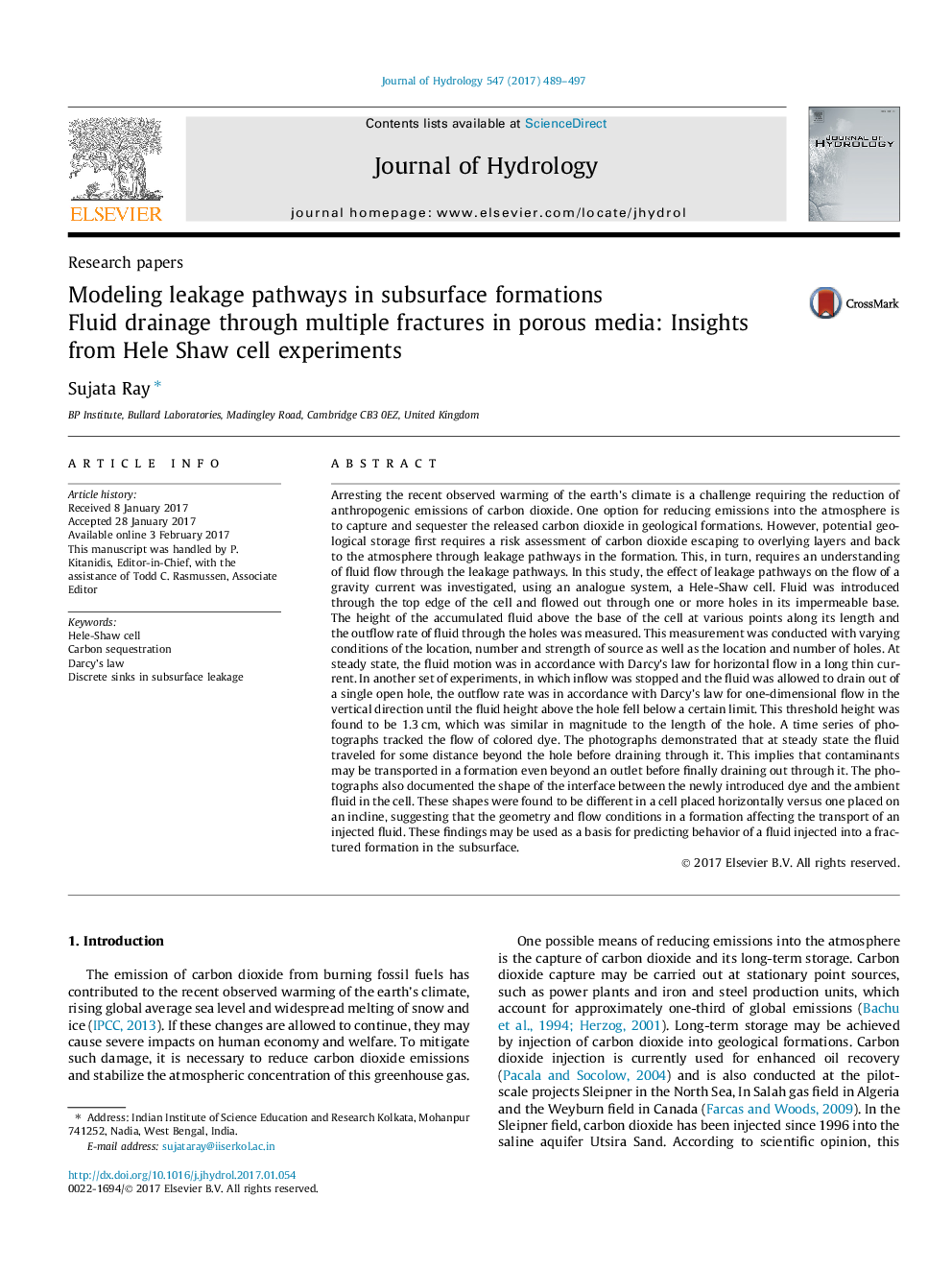| کد مقاله | کد نشریه | سال انتشار | مقاله انگلیسی | نسخه تمام متن |
|---|---|---|---|---|
| 5771061 | 1629907 | 2017 | 9 صفحه PDF | دانلود رایگان |

- Fluid leakage in subsurface formations was simulated by a Hele Shaw cell.
- The cell had an impermeable base with gaps at intervals along its length.
- At steady state, the outflow of glycerol through the gaps followed Darcy's law.
- With no inflow, Darcy's law was valid up to a threshold value of hydraulic head.
- Fluid flowed a certain distance downstream of a gap before flowing out through it.
Arresting the recent observed warming of the earth's climate is a challenge requiring the reduction of anthropogenic emissions of carbon dioxide. One option for reducing emissions into the atmosphere is to capture and sequester the released carbon dioxide in geological formations. However, potential geological storage first requires a risk assessment of carbon dioxide escaping to overlying layers and back to the atmosphere through leakage pathways in the formation. This, in turn, requires an understanding of fluid flow through the leakage pathways. In this study, the effect of leakage pathways on the flow of a gravity current was investigated, using an analogue system, a Hele-Shaw cell. Fluid was introduced through the top edge of the cell and flowed out through one or more holes in its impermeable base. The height of the accumulated fluid above the base of the cell at various points along its length and the outflow rate of fluid through the holes was measured. This measurement was conducted with varying conditions of the location, number and strength of source as well as the location and number of holes. At steady state, the fluid motion was in accordance with Darcy's law for horizontal flow in a long thin current. In another set of experiments, in which inflow was stopped and the fluid was allowed to drain out of a single open hole, the outflow rate was in accordance with Darcy's law for one-dimensional flow in the vertical direction until the fluid height above the hole fell below a certain limit. This threshold height was found to be 1.3Â cm, which was similar in magnitude to the length of the hole. A time series of photographs tracked the flow of colored dye. The photographs demonstrated that at steady state the fluid traveled for some distance beyond the hole before draining through it. This implies that contaminants may be transported in a formation even beyond an outlet before finally draining out through it. The photographs also documented the shape of the interface between the newly introduced dye and the ambient fluid in the cell. These shapes were found to be different in a cell placed horizontally versus one placed on an incline, suggesting that the geometry and flow conditions in a formation affecting the transport of an injected fluid. These findings may be used as a basis for predicting behavior of a fluid injected into a fractured formation in the subsurface.
Journal: Journal of Hydrology - Volume 547, April 2017, Pages 489-497